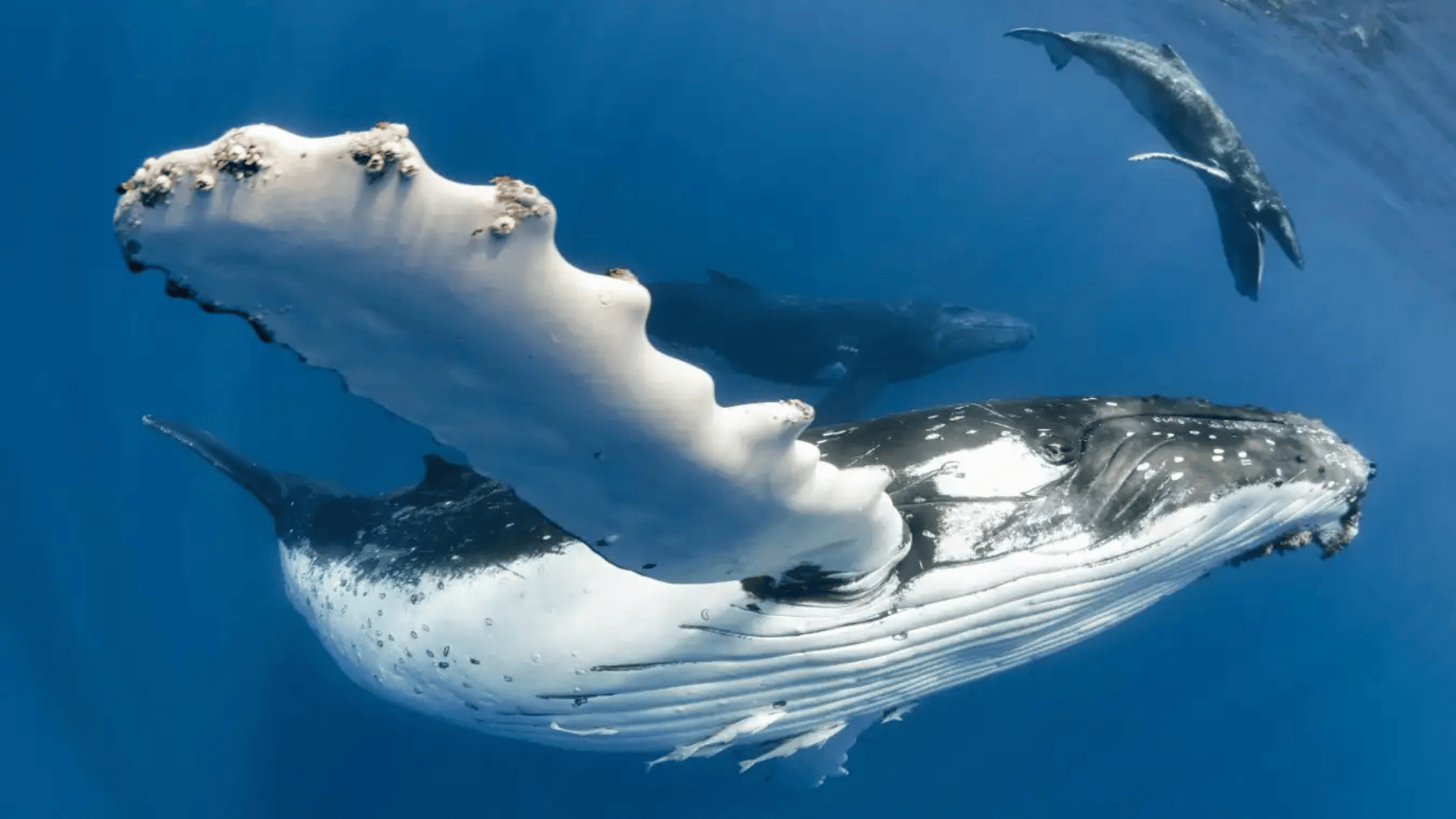An interdisciplinary team of scientists recently discovered that humpback whale songs share a key pattern with human language.

Every human language follows a pattern or statistical rule called Zipf’s law, which means the most common word is used twice as often as the second most common word, three times as often as the third most common word, four times as often as the fourth most common word, etc. A study published in the journal Science suggests that this rule may have developed for whale communication because it makes culturally transmitted communication easier to learn and pass on to the next generations.
To find this pattern, researchers began by identifying the units within the song that would equate to human words. They achieved this by using the way babies learn language as a model.
“Speech is continuous, and there are no pauses between words, so infants have to discover word boundaries,” explains Inbal Arnon, a psychologist at the Hebrew University of Jerusalem and a co-author of the study, to New Scientist. “To do this, they use low-level statistical information: Specifically, sounds are more likely to occur together if they are part of the same word. Infants use these dips in the probability that one sound follows another to discover word boundaries.”
For example, children may be able to identify the separation of the words in the phrase “after dinner” by recognizing that the syllables “ter” and “din” aren’t usually heard together. If whale song has a similar structure, finding these cues could allow us to segment the language.
Researchers used this method to analyze the distribution of these segments throughout eight years of humpback whale song data collected in New Caledonia in the South Pacific. By tracking the frequency of sounds and word-like sequences, including syllables they describe as “grunt,” “descending high squeak,” and “ascending moan,” the team realized that humpback whale songs also follow Zipf’s law.
The presence of Zipf’s law in humpback whale songs “suggests their communicative behavior has culturally evolved to become easier for novices to learn, echoing how the structure of our languages seems to have evolved to be more learnable by human infants,” Andrew Whiten, a primatologist at the University of St. Andrews in Scotland who was not involved in the study but co-authored an accompanying perspective on it, tells National Geographic.
Scientists behind the study hope to study the speech of other types of animals, such as songbirds, elephants, and bats, to see if their language follows this rule as well.
“It strengthens the view that we should be thinking about human language not as a completely different phenomenon from other communication systems but instead think about what it shares with them,” Arnon tells Scientific American.







